Indoor Vegetable Gardening
Gardening 101 tips that will carry your growing season into the winter months.
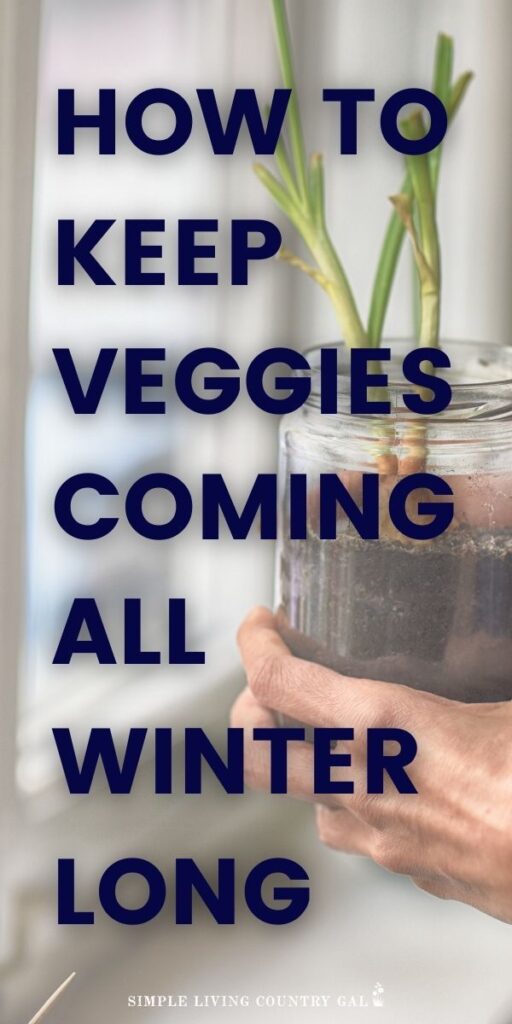
Having an indoor garden is perfect for anyone who simply loves the idea of fresh produce year-round but hates the thought of stomping out into the snow to harvest it under a cold frame, then this option is most definitely for you.
As an added bonus, some of the best vegetables to grow in the winter also grow well in indoor gardens. If you can find space, you can grow a flourishing countertop or window sill garden. Looking for something bigger? You can even tuck larger pots in a corner of your living or dining room. If done right, your indoor garden can add a bit of decor to a closed-up winter house and bring a bit of summerness to your home. (and yes, that is a word)
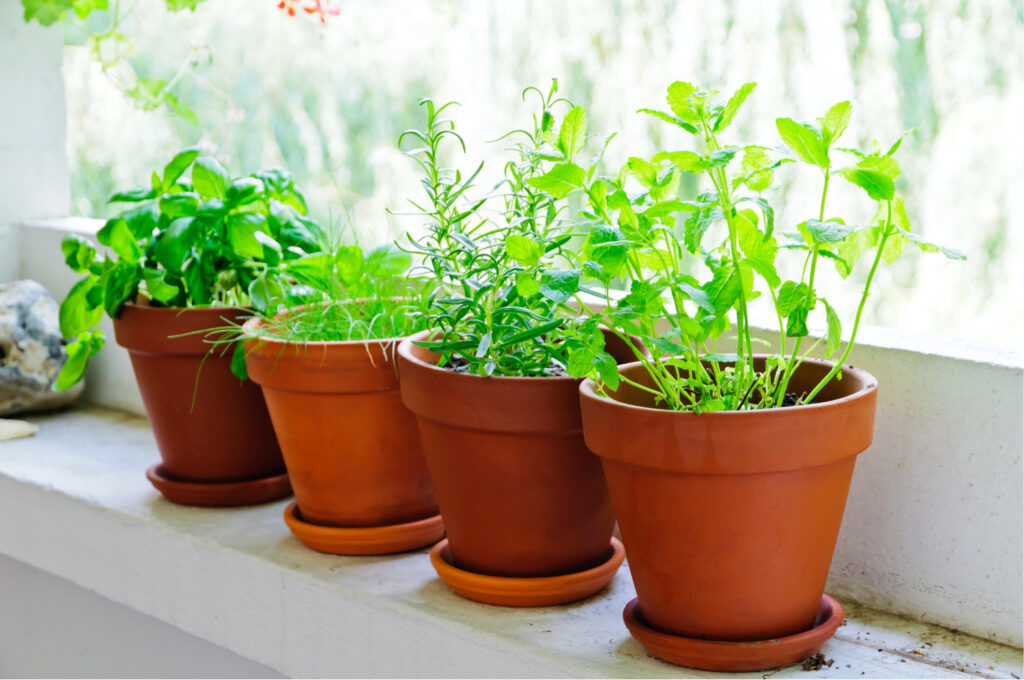
To keep your vegetables thriving, the temperature indoors is incredibly important. For instance, don’t set up an indoor garden in an area that is prone to cold drafts. Instead, keep things in a room that tends to be on the warmer side and where you can regulate the thermostat more easily.
Hydroponics is another fun option to consider; planting vegetable seeds in soil pods that are placed in a water bath. There are some great options for all-in-one hydroponic gardens that include the container and grow lights right in the setup.
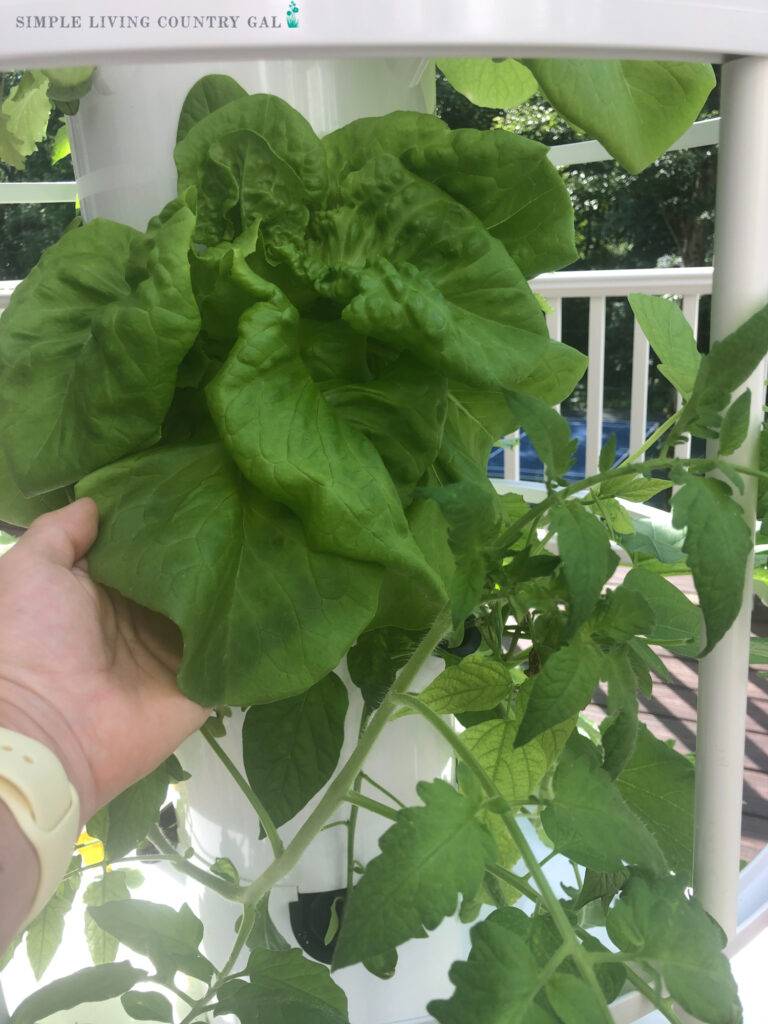
Indoor Vegetable Gardening Tips
When setting up your garden, there are a few things to consider before getting started.
Know Your Light
Gardens need a lot of light to grow; if you don’t have enough natural light, you’ll want to consider purchasing grow lights. Vegetables can require anywhere from 12-16 hours of light per day, either direct or indirect depending on the plant’s needs. You can use natural light to grow, but you will also need to supplement with artificial light to get the full amount of light for your plants to grow.
Southern-facing windows
These will provide some quality direct light, especially in the winter, as well as indirect light. If you have a spot on the south side of your home, your plants will receive light for the most hours in a day. Be sure to check for drafts, as they can stunt the growth of your plants.
Northern-facing windows
These will provide lower levels of indirect light; this means you will get less light for about the same number of hours as southern-facing windows. Yes, this is perfect for house plants that require low light, but unfortunately, it’s not enough to support the needs of most vegetables and herbs.
West-facing windows
These will provide shade in the morning but plenty of direct sunlight later in the day. Consider this area for plants that can tolerate a lot of direct sun as well as a little extra warmth.
East-facing windows
These will provide the opposite of west-facing windows. You can expect to get direct sun in the morning, but then you will have mostly shade throughout the rest of the day. Leafy herbs and flowers can do well here, getting the sun they need but also getting some protection from the heat that may happen with west-facing windows.
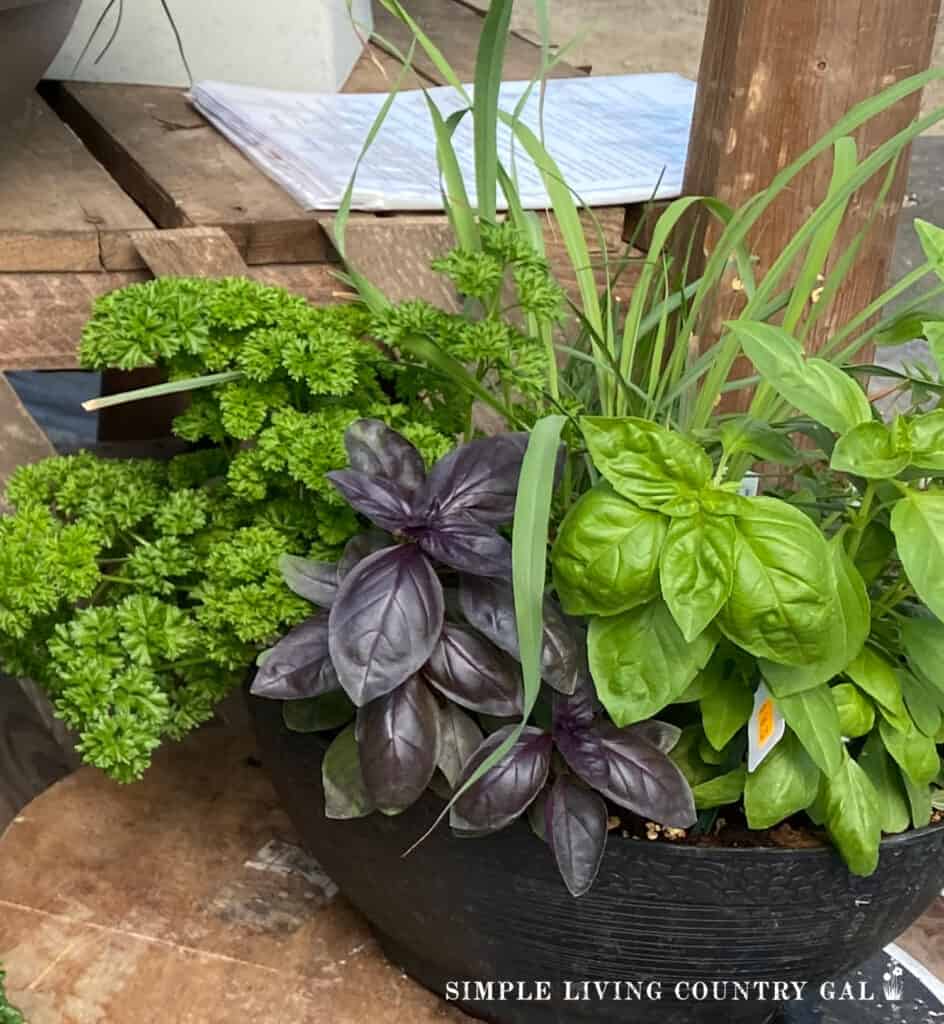
Other Light Options
If you’re not receiving enough direct or indirect light for the vegetables you want to grow, you may want to consider other lighting options, such as grow lights. Grow lights can simulate sunlight, providing all the light your vegetables need; however, not all indoor lights are created equally.
While a household lamp will give off enough light for a houseplant, it won’t provide enough light for your indoor vegetable garden. Gardens need more than just bright light; they need light that’s within the right spectrum for good photosynthesis.
Quality grow lamps will provide a healthy lighting option with less heat to provide the best benefits for your plants. LED grow lamps are a good choice for seedlings, leafy greens, herbs, and even small fruits that you may be growing indoors.
Grow lamps can also be manipulated to provide better-quality light. For instance, you can simulate full sunlight by moving your plants closer to the lamp or decrease light for partial sun conditions by moving the plants further away.
Grow Lights for Indoor Gardening:
iGrowtek 2ft Grow Light for Seed Starting,LED Grow Lamp for Indoor Plants,Seedling Grow Light with Stand,Seed Starter Light Kit with Natural White Spectrum,Height Adjustable,Iron Frame,ON-Off Switch



A grow system with lights can be compact and effective for countertop gardens. Aerogarden’s Grow Light Panel will sit directly on the countertop and allow space for your plants to sit underneath. This is a great option for anyone who wants to try indoor vegetable gardening before going “all in”.
SLCG PRO TIP: Refer to the growing recommendations on your seed packet for the amount of light needed for the vegetables you want to grow. If you’re growing several types of vegetables in the same indoor garden, you will want to be sure they all have the same lighting, fertilizing, and watering needs. This will help you to create a small but mighty garden that is full of the veggies you love the most without taking up a lot of room in your home.
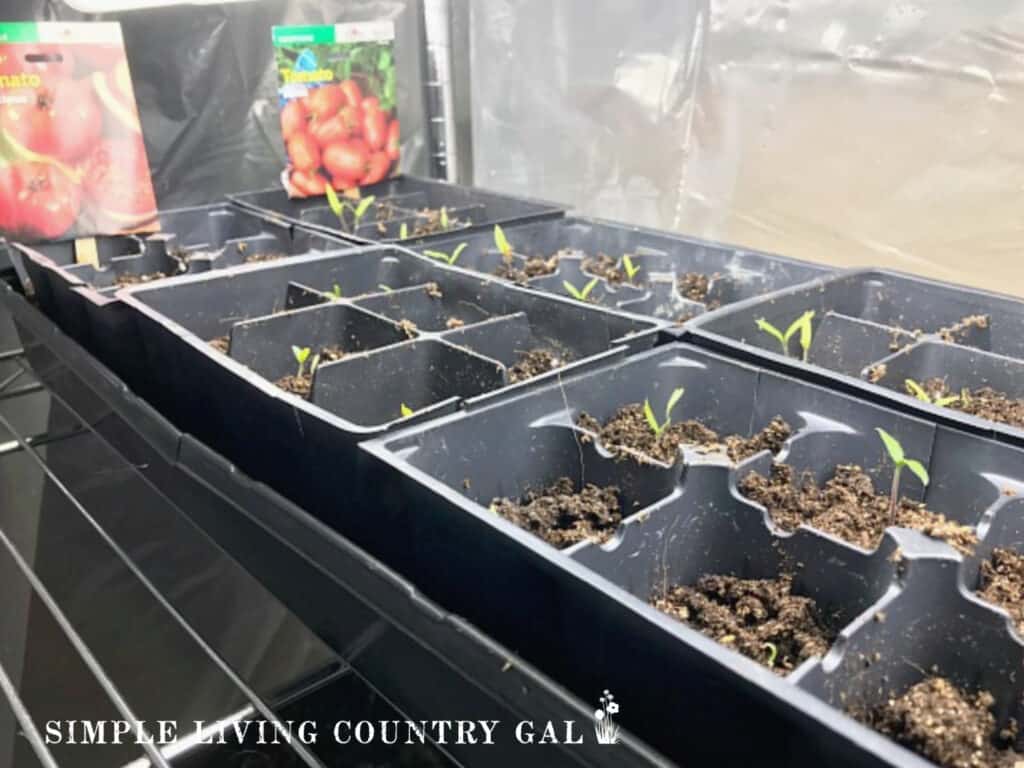
Getting Started With Your Indoor Vegetable Garden
If you’re just getting started, it can be hard to know what to grow. You want your indoor vegetable garden to be successful, but first, you will need to confirm just how much space it will take and if the spot you have in mind will have enough light for proper growth.
Leafy greens are often a good vegetable to plant first; lettuce, spinach, and kale varieties are so easy to grow indoors. They only need a moderate amount of light and tend to do quite well in partial shade, allowing you to test your lighting out before growing something that needs hours of direct light.
Leafy greens are also compact to medium-size in growth, making them perfect for testing out the amount of space you’ll need. Some options are a kitchen countertop, window sill, or just a corner in your living room will do quite well.
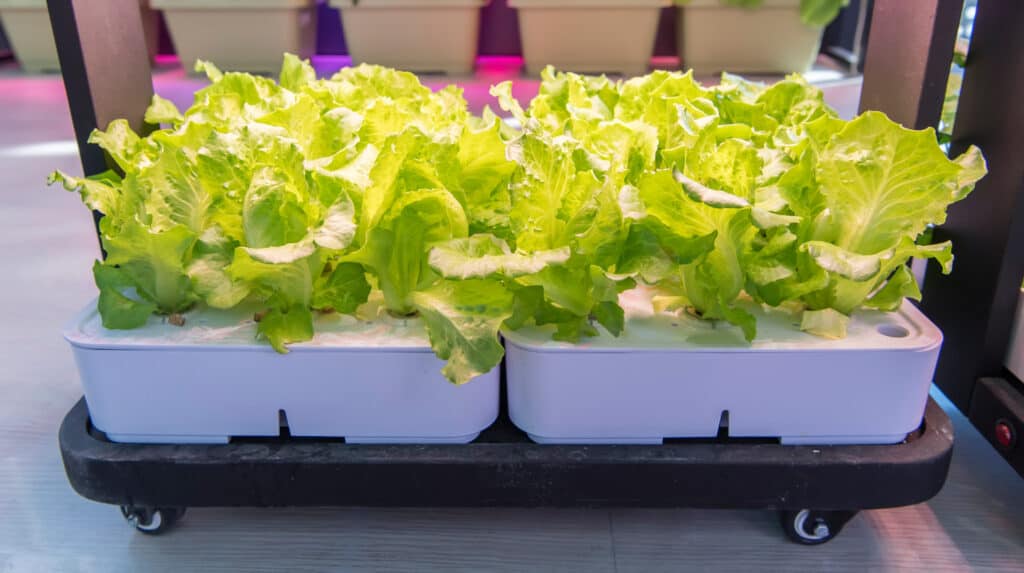
The goal is for them to get about 12 hours of light per day, which can be a combination of natural light and grow lights such as the ones mentioned above. Leafy greens are easy to care for, grow quickly, and allow you to harvest regularly as you need to makings for a fresh salad. Remember to give them a little natural liquid fertilizer every month to encourage the best growth.
Seedlings and microgreens will need more light to grow. You can use a timer to be sure you are leaving your grow lights on for about 16 hours a day. If you do have some natural light, you can cut this time back a bit. Remember, a grow light is best used as a supplement to natural light.
Fortunately, grow lights don’t give off too much heat, allowing you to keep your seedlings close to the lights without worrying about burning them. Once your seedlings start to sprout, you can cut back on the hours of light they receive.
SLCG PRO TIP: In addition to heat, overfertilizing can cause your seeds to burn, so be sure to read the recommendations on the seed packet for fertilization needs.
Best Vegetables to Grow Indoors in Winter
As with any garden, you will find some plants are more successful indoors than others. Their size, potting options, and available lighting make them good options for growing in an indoor vegetable garden.
When deciding what to grow, consider the vegetables you regularly purchase from the grocery store or farmer’s market. Luckily with the right set-up, many of your favorite veggies can be grown inside containers.
SLCG PRO TIP: Want to jump-start your herb garden? You can buy plants all ready to go right from your grocery store. Huge basil plants, parsley, and more just wanted to go home with you!
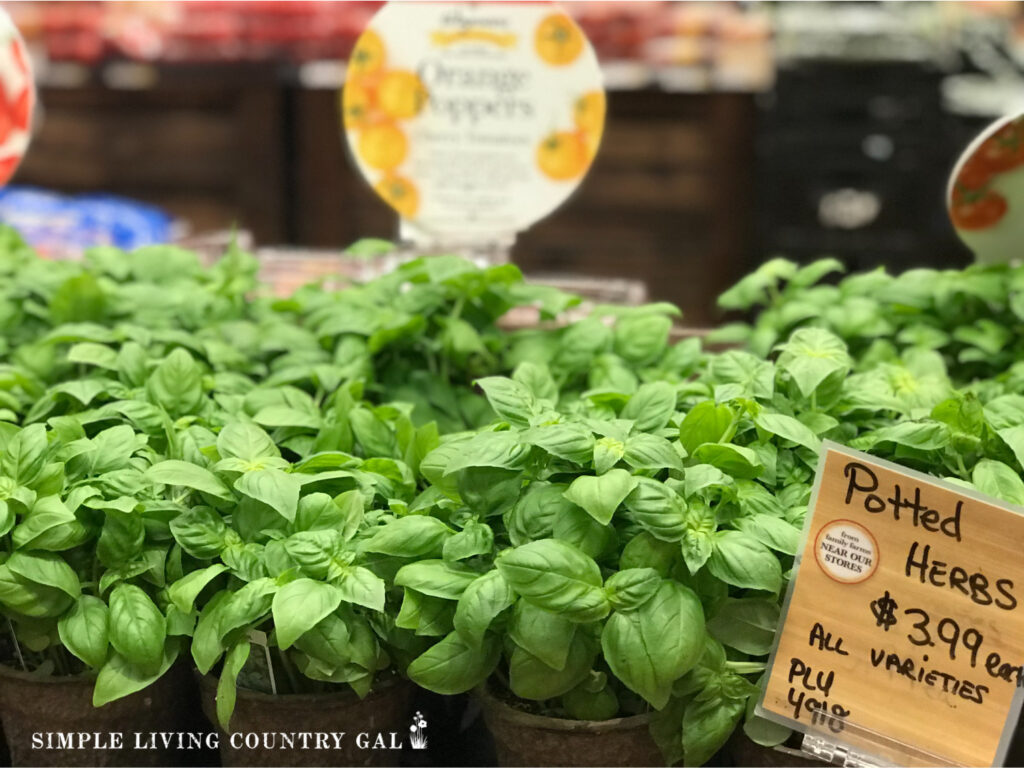
best vegetables to grow indoors:
- Radishes – They don’t need a lot of light, but since they are root vegetables, they’ll need a deep and wide container to allow bulb growth. A healthy addition to any salad.
- Scallions – They are easy to grow, don’t need a lot of light, and add tons of flavor to a variety of dishes. Try them in sauces, dips, and roasted veggie dishes.
- Microgreens – Microgreens are not only easy to grow, they’re very healthy. It may surprise you to know that they pack more than 40 times more vitamins and nutrients than other fully grown veggies. They’re a perfect addition to sandwiches and salads and grow in just 2-3 weeks.
- Potatoes – These grow nicely in container pouches that will fit easily into any corner, but give them some room because they’ll grow big. They’ll also need a lot of light, so consider a grow light option.
- Leafy Greens – As mentioned earlier, leafy greens like spinach and lettuces are easy to grow and will flourish in even a compact space. They do need good drainage for healthy growth though so use a pot with drainage holes and an indoor potting mix.
- Carrots – Like radishes and potatoes, they’ll need some depth so a deep planter or container pouch is necessary. They’ll also need plenty of light so they’re a good option to plant with or near potatoes.
- Tomatoes – Although technically a fruit, they go well with various vegetables. They’ll need 8-10 hours of light a day, so make sure they have good sunlight or a grow light available. Smaller varieties, like cherry tomatoes, are best for indoor gardens. Tomatoes also do amazingly well in hydroponic setups, making them an easy-growing option for gardening newbies.
Hydroponic Setups:
Hydroponics Growing System Indoor Garden: Herb Garden Kit Indoor with LED Grow Light Quiet Smart Water Pump Automatic Timer Healthy Fresh Herbs Vegetables – Hydroponic Planter for Home Kitchen Office



All of these options grow easily in an indoor vegetable garden during the winter and, bonus, they can be easily moved outside in the summer if you’d like. Most don’t require a lot of space and can be grown on your countertop or in a corner of your kitchen with a little lighting help.
How to Choose a Setup
How you plant your garden will depend on a few factors: how much space you have, what you want to grow, and how much work you want to put into it.
Small containers or a small hydroponic system are good options for a countertop garden or even a window sill garden, but they don’t allow for as many vegetable options. With limited space, these options are good for leafy greens, microgreens, and herbs. Any kind of root vegetable or climbing plant will be too confined in this space.

Hydroponic grow systems are a good option for both small and larger gardens. Through a hydroponic system, plants can constantly draw on moisture and nutrients as needed; they don’t have to wait for you to remember to water and fertilize, allowing them to grow faster. They also take up less space and, with very little soil, there is less mess and less chance of pests in the soil.
Grow lights are also a consideration for your indoor garden if you don’t receive long hours of sunlight. If considering a grow light, look for one with adjustable height and direction to give your plants the best possible light. You may also want to consider features like programmability for automatic on and off settings, as your plants may need up to 16 hours of light daily.
Lastly, you’ll want to consider what vegetables you’d like to grow and how much you’d like to harvest. If you want an indoor garden for daily or weekly harvesting of vegetables and salad greens, you’ll need a larger setup.
Indoor Vegetable Garden Options
These are a few of my favorites for indoor gardening planters.
AeroGarden Bounty Elite – Another great option for a countertop garden that grows 9 plants. The light system is adjustable to provide more light for seedlings.
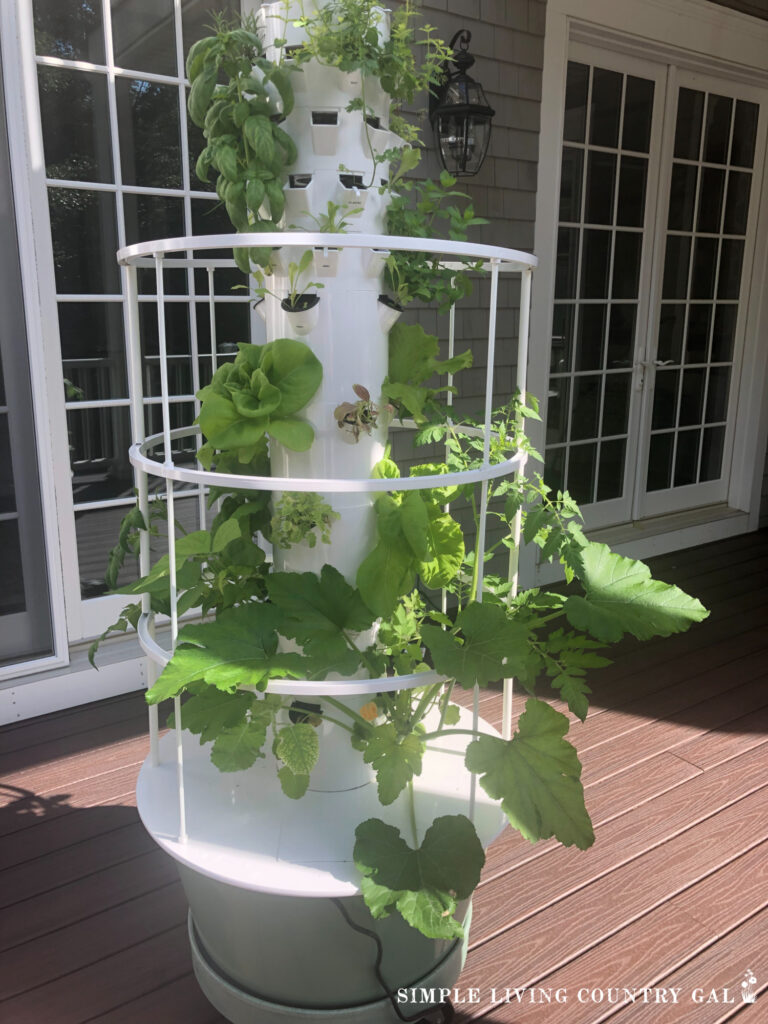
Amazing Creation’s Stackable Planter – This stackable planting system allows you to grow a variety of vegetables in a smaller space. The vertical system provides 5 planting pots, each able to plant 3 vegetables or herbs. It can sit on a countertop or on the floor.
Outland Living’s Vertical Raised Garden Bed – Available in a variety of sizes and colors, this vertical garden planter allows you space for a larger vegetable garden with five tiers of planting containers. Starting at 4 feet tall and 2 ½ feet wide, it’s a space-saving option with lots of possibilities.
Whether you have a little space, a lot of space, or somewhere in between, an indoor vegetable garden can extend the growing season throughout the winter months. And with containers, you can start your garden in the winter and move it outside as the weather warms up.
With so many factors to consider, like lighting, containers, size, and harvesting, be sure to plan your garden before planting. Choose vegetables that will grow well together, ones that you’ll enjoy eating, and ones that will grow nicely in your available space.
Starting a small garden right in your kitchen this winter is the perfect way to test your gardening skills with your own indoor vegetable garden.










